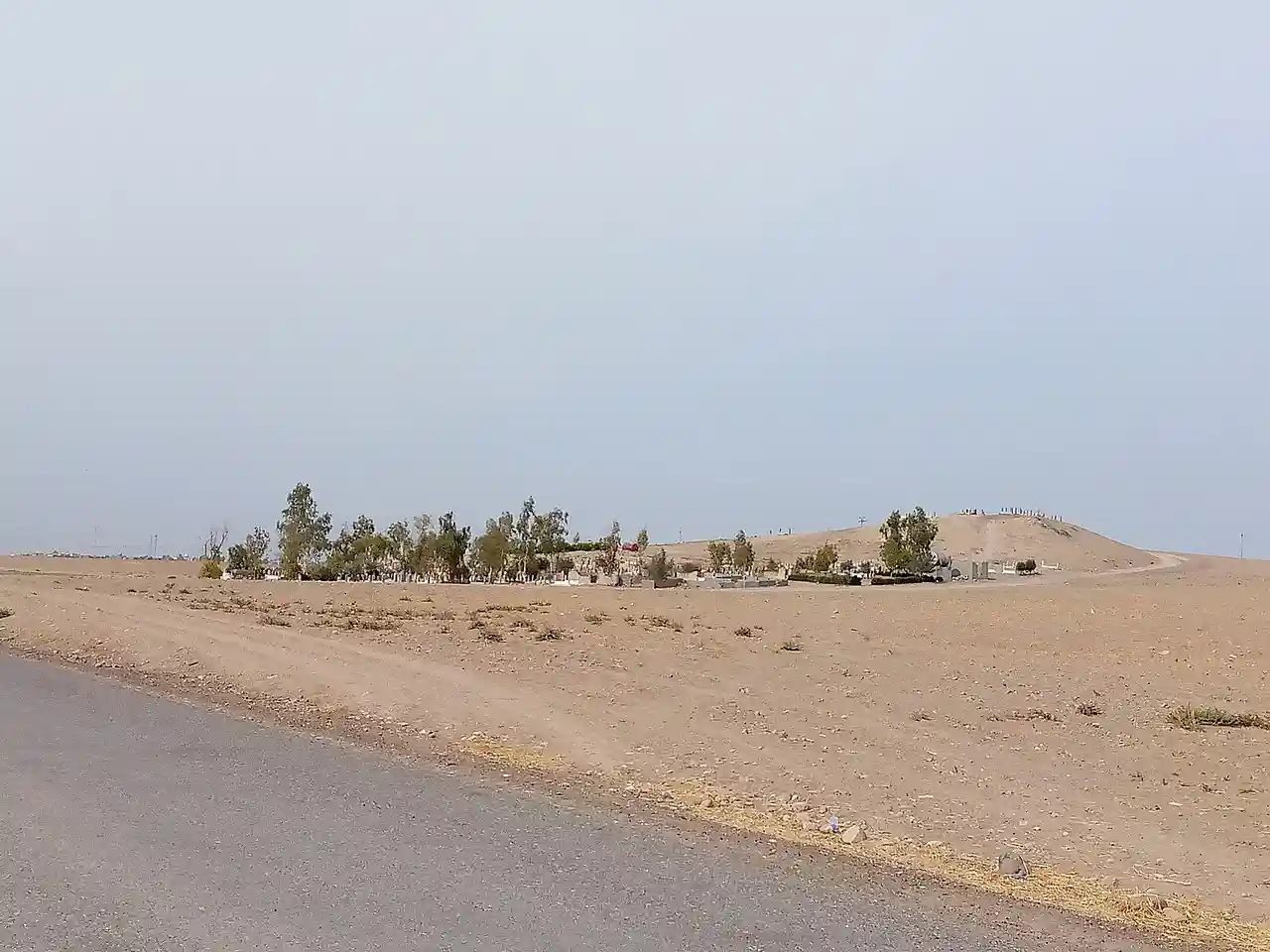 Kurd Qaburstan - Credit: Wikimedia Commons
Kurd Qaburstan - Credit: Wikimedia Commons
 Kurd Qaburstan - Credit: Wikimedia Commons
Kurd Qaburstan - Credit: Wikimedia Commons
Kurd Qaburstan, is an ancient Near East archaeological site in the Erbil Governorate, in the Kurdistan Region of Iraq, 22 kilometers southwest of Erbil. It is considered one of the most important archaeological sites in the region. The site is strategically located between the Upper and Lower Zab rivers. The modern village of Yedi Kizlar is adjacent to and covers a portion of the southeastern lower town. The site is primarily a single-period site dating to the early 2nd millennium BC, the Middle Bronze Age (contemporaneous with the historical Old Babylonian period). There is also a compact Late Bronze Age occupation on the high mound (possibly Mitanni-related). Kurd Qaburstan has been proposed as the location of the ancient city of Qabra. The site is located near Tell BaqrtaKopanias, Konstantinos, et al, "The Tell Nader and Tell Baqrta Project in the Kurdistan region of Iraq: Preliminary report of the 2011 season", Subartu 6, pp. 23-57, 2013Konstantinos Kopanias, Claudia Beuger, John MacGinnis, and Jason Ur, "The Tell Baqrta Project in the Kurdistan Region of Iraq", In The Provincial Archaeology of the Assyrian Empire, edited by John MacGinnis, Dirk Wicke, and Tina Greenfield, Pp. 117-128. Cambridge: McDonald Institute for Archaeological Research, 2016 and Qasr Shemamok (Kilizi), other prominent urban sites on the Erbil plain.Rouault, Olivier and Masetti-Rouault, Maria Grazia, "French Excavations in Qasr Shemamok-Kilizu (Iraqi Kurdistan): The First Mission (2011)", in Tradition and Innovation in the Ancient Near East: Proceedings of the 57th Rencontre Assyriologique International at Rome, 4-8 July 2011, edited by Alfonso Archi, University Park, USA: Penn State University Press, pp. 481-490, 2015Masetti-Rouault, Maria Grazia, "Late Bronze and Iron Age Levels from Qasr Shemamok.: A First Evaluation of the Impact of the Assyrian Presence in the Region East of Calah", Proceedings of the 11th International Congress on the Archaeology of the Ancient Near East: Vol. 2: Field Reports. Islamic Archaeology, edited by Adelheid Otto et al., 1st ed., Harrassowitz Verlag, pp. 253–64, 2020Rova, Elena, "Fragments of a Hidden History: The Third Millenium BC at Qasr Shemamok", P. Abrahami et L. Battini (eds), Ina dmarri u qan tuppi. Par la bêche et le stylet, pp. 245-255, 2019Rouault, Olivier, Maria Grazia Masetti-Rouault, and John MacGinnis, "Les inscriptions royales d’Irišti-enni à Qasr Shemamok", Études Mésopotamiennes–Mesopotamian Studies: N° 2–2022, pp. 448-467, 2023 Read more on Wikipedia
Source: en.wikipedia.org